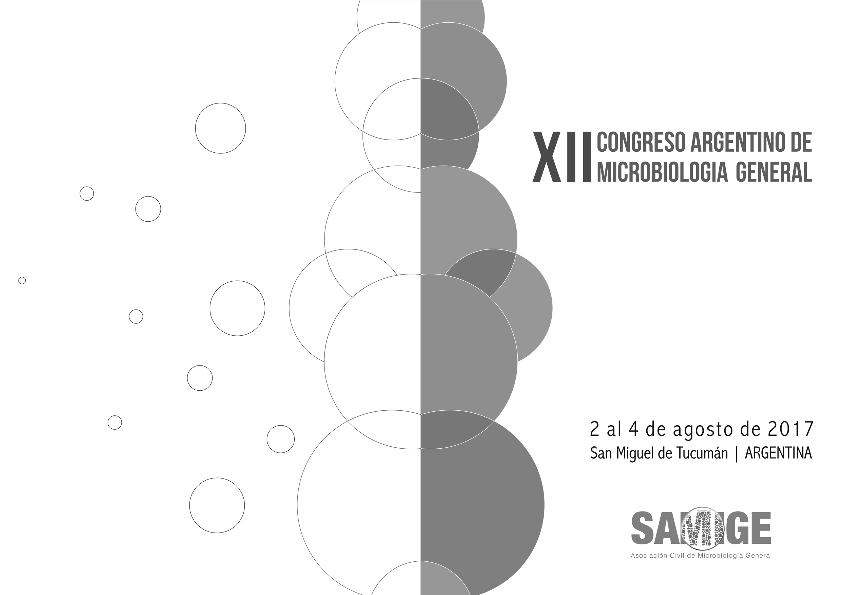Evento
Selection of vinasse-degrading microorganisms
del Gobbo, Luciana Melisa ; Rulli, Macarena María
; Rulli, Macarena María ; Cuozzo, Sergio Antonio
; Cuozzo, Sergio Antonio ; Colin, Veronica Leticia
; Colin, Veronica Leticia
 ; Rulli, Macarena María
; Rulli, Macarena María ; Cuozzo, Sergio Antonio
; Cuozzo, Sergio Antonio ; Colin, Veronica Leticia
; Colin, Veronica Leticia
Tipo del evento:
Congreso
Nombre del evento:
XII Congreso Argentino de Microbiologia General
Fecha del evento:
08/2017
Institución Organizadora:
Asociación Argentina de Microbiología;
Título del Libro:
XII Congreso Argentino de Micorbiología General
Editorial:
Asociación Argentina de Microbiología
Idioma:
Inglés
Clasificación temática:
Resumen
One of the main problems of the sugar-alcohol industries is the generation of large volumes of vinasse. The release of this acid effluent generated during the alcoholic distillation causes an undesirable environmental impact as a consequence of the high content of organic matter and other toxins. Many technologies based on vinasse conditioning by microbial pathways are continuously evaluated in order to mitigate their environmental impact. In the current study, a preliminary selection of microorganisms from the soil with the potential to grow and degrade effectively the sugarcane vinasse was performed. To perform the isolation, two vinasse concentrations in distilled water (10 and 30%, v/v) added with 2% agar (w/v) were used as selective solid media (VS10 and VS30). An aqueous suspension obtained from a sugarcane vinasse-contaminated soil was inoculated in the VS media. A suspension obtained from same soil but without vinasse was also inoculated in these media to be used as controls. After 48 h of incubation at 30ºC, spores of the microorganisms developed in the VS media were harvested and quantified to be inoculated in a liquid medium consisting of 30% vinasse in distilled water (VL30). At the 72 h of incubation in VL30 (at 30ºC, 150 rpm), the biomass concentration was measured by estimation of the dry weight at 80°C, while the biological oxygen demand in 5 days was quantified by a standard method (BOD5). Under the current assay conditions, no microbial growth in the VS media from the soil samples without vinasse can be detected. However, two types of colonies from soil exposed to raw vinasse were isolated using VS30 as a selective medium. Microscopical observations of the two isolates denoted as V1 (spores pink) and V2 (green spores), revealed sparsely branched and septate hyphae as well as the presence of aspergillary heads. Both isolates were able to grow in VL30 and remove over 50% of the biodegradable organic matter, suggesting a proportional reduction in the effluent toxicity. This finding could be promising in terms of the future application of both strains for recovery of effluents with high load organic like vinasse.
Palabras clave:
VINASSE
,
EFLUENT TOXICITY
,
BIODEGRADABLE ORGANIC MATTER
Archivos asociados
Licencia
Identificadores
Colecciones
Eventos(PROIMI)
Eventos de PLANTA PILOTO DE PROC.IND.MICROBIOLOGICOS (I)
Eventos de PLANTA PILOTO DE PROC.IND.MICROBIOLOGICOS (I)
Citación
Selection of vinasse-degrading microorganisms; XII Congreso Argentino de Microbiologia General; San Miguel de Tucumán; Argentina; 2017; 1-2
Compartir



